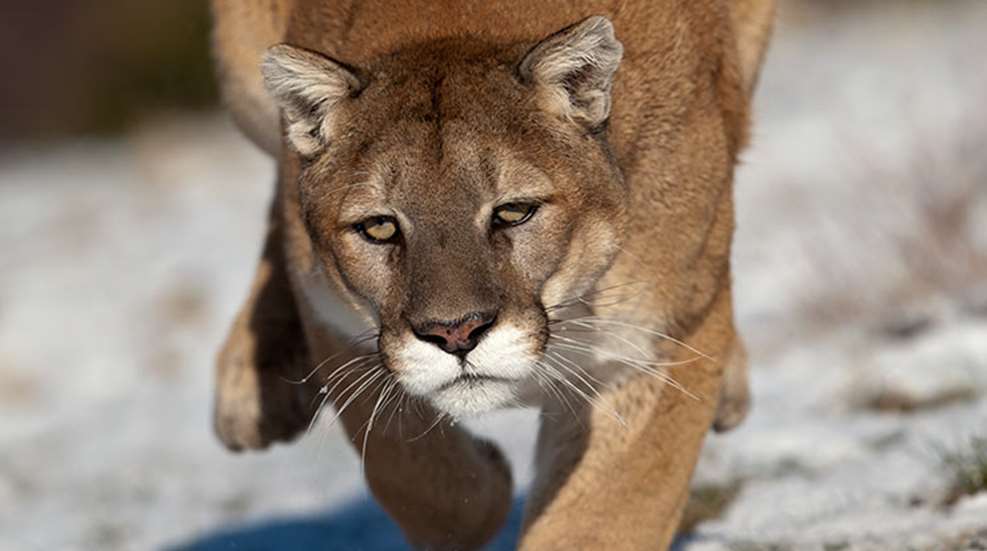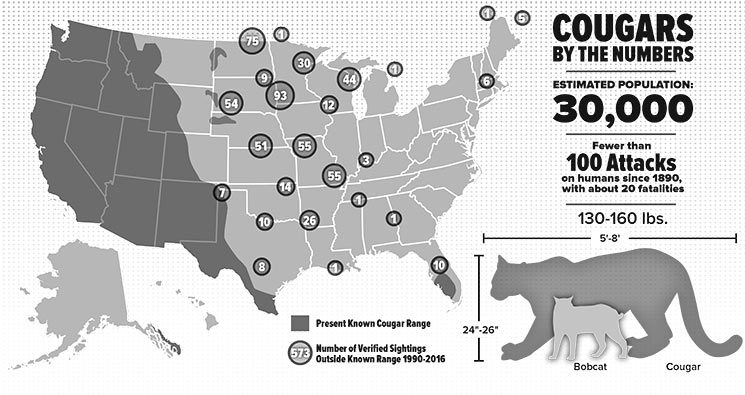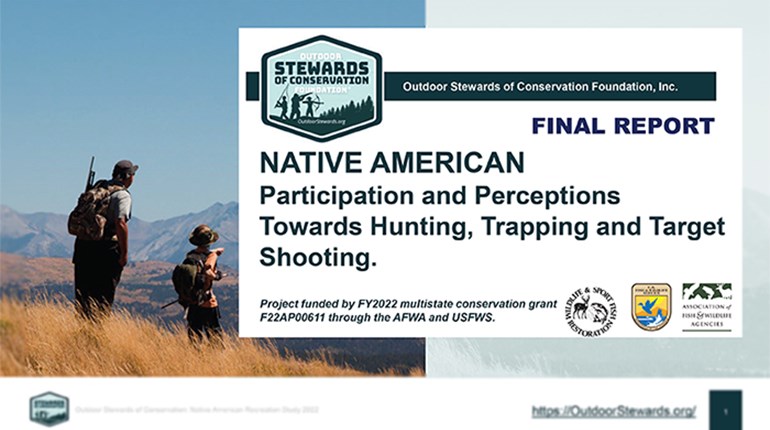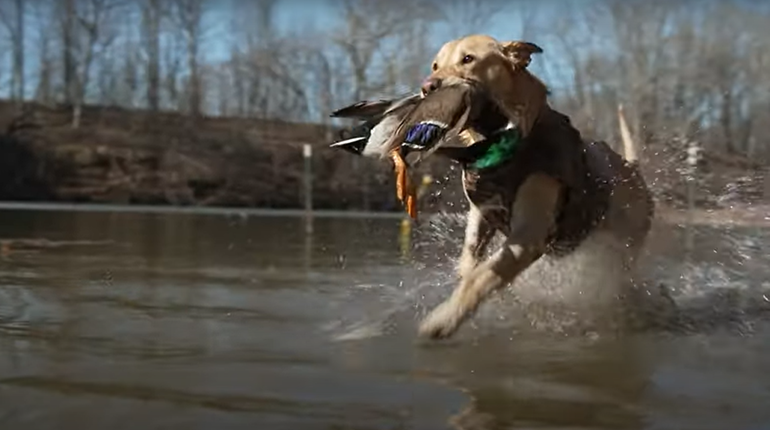
Until someone runs over Bigfoot, no roadkill will equal the fame achieved by a 3-year-old male cougar that got SUV’d in June 2011 near Milford, Conn., on the Wilbur Cross Parkway.
The young cougar died on impact, suffering five broken ribs and extensive damage to internal organs. The exam and necropsy found no evidence the cat had ever lived in captivity. In fact, DNA evidence revealed it was from the Black Hills’ population, which covers roughly northeastern Wyoming and western South Dakota, and northwestern Nebraska. Hair and fecal samples further identified it as the same sub-adult cougar that marked its travels from 2009 through 2010 at one site in Minnesota, three in Wisconsin and another in New York. Biologists also identified it on trail-camera photos at three sites in Wisconsin and one in Michigan’s Upper Peninsula.
A May 2016 study team led by Jason Hawley at Connecticut’s Department of Energy and Environmental Protection traced the cougar’s likely route from South Dakota to the crash site. The team estimated the minimum distance at 1,675 miles, roughly twice as far as the previous distance of a dispersing cougar.
The researchers had little doubt what motivated the cougar: finding a female mate. The cat’s futile quest inspired a book (Heart of a Lion), countless articles, and starry-eyed comparisons to heroic guile and epic journeys not seen since Ulysses in the Iliad and the Odyssey. As one book reviewer wrote, “This is a story of survival, a tale of how a big cat uses stealth, cunning and physical prowess to travel thousands of miles seeking others of its kind to settle new lands and seed future generations.”
Well, actually, the young tomcat was just desperate and doomed. Its tragic error? It turned northeast instead of northwest when departing the Black Hills, which sent it toward Connecticut instead of Idaho. For those projecting human traits, a good comparison is Jim Marshall, who returned a fumble 66 yards the wrong way in October 1964 to score a safety for the 49ers instead of a touchdown for his Vikings—a play NFL Films deems the No. 1 folly in pro football history.
Even so, plenty of young lovelorn male cougars have dispersed eastward from the Black Hills during the past 20-plus years, although most draw the line at 100-300 miles before realizing they won’t find a female. Missouri has verified 69 such transient cougars since 1994, but never documented a female among them until February 2016. That feline has left no sign since.
Likewise, Iowa has identified 25 cougars since 1995. But before officials shot a female in Ida County about 50 miles east of Nebraska in June this year, there had been only one verified female cougar east of the Missouri River in recent times. The first was in Minnesota. Illinois and Wisconsin verified young male cougars in recent years through DNA samples from hair, blood, urine or feces, but no females. Therefore, no female cougars—other than those in Florida—have been verified east of the Mississippi River in recent history.
Why such dispersal differences between the sexes? Mature male cougars routinely drive young tomcats from their territories, while juvenile females seldom move far from home before breeding. Their home ranges also differ, with adult females living on 15-30 square miles, and adult males covering 50-135 square miles.
Those differences also help explain why the species expands its range slowly. Black Hills cougars recently needed nearly 20 years of dispersals through relatively wild, undeveloped habitats to establish a breeding population in Nebraska’s Pine Ridge area 100 miles to the southeast.
Even so, possible cougar sightings remain high, but few are verified through physical or photographic evidence. Missouri has verified six to 10 cougars annually in recent years, which is about a 1 percent verification rate. Likewise, Wisconsin had 265 reported cougar sightings in 2015, but biologists verified only three. Minnesota, meanwhile, has verified 25 cougars since 2005, but verified none from October 2013 through May 2016 before verifying two later in the year.
State wildlife agencies investigate most reported sightings, but won’t verify them without physical or photographic evidence. They often place scaled silhouettes of cougars and bobcats at trail-camera locations to verify photos, and comb the sites for tracks, hair, feces and other evidence. Wisconsin’s field checks typically conclude most sightings are bobcats, farm cats, dogs, coyotes, fishers or otters. Bobcats provide many false sightings. If the bobcat’s rear and stubby tail are obscured by brush or turned away from the eyewitness or camera, or the white patches behind its ears are obscured, it can be mistaken for a cougar.
Even when presented evidence to the contrary, few eyewitnesses recant their reports. In fact, some become more adamant or fantastic in their claims. For instance, about 20 years ago most cougar reports claimed the animals were black panthers, even though melanism in cougars is even rarer than albinism.
All that’s certain is no Midwestern state today—except in Nebraska and the Dakotas—has a confirmed breeding population of cougars. Therefore, it’s doubtful Northeastern and Southern states will soon have one, either.
Does that mean cougar sightings will decrease? Not likely. As Missouri carnivore specialist Laura Conlee notes, people are placing more trail cameras in their woodlots than ever before. And as the Connecticut roadkill proved, one far-ranging cougar can produce enough photos to suggest a population boom.





































